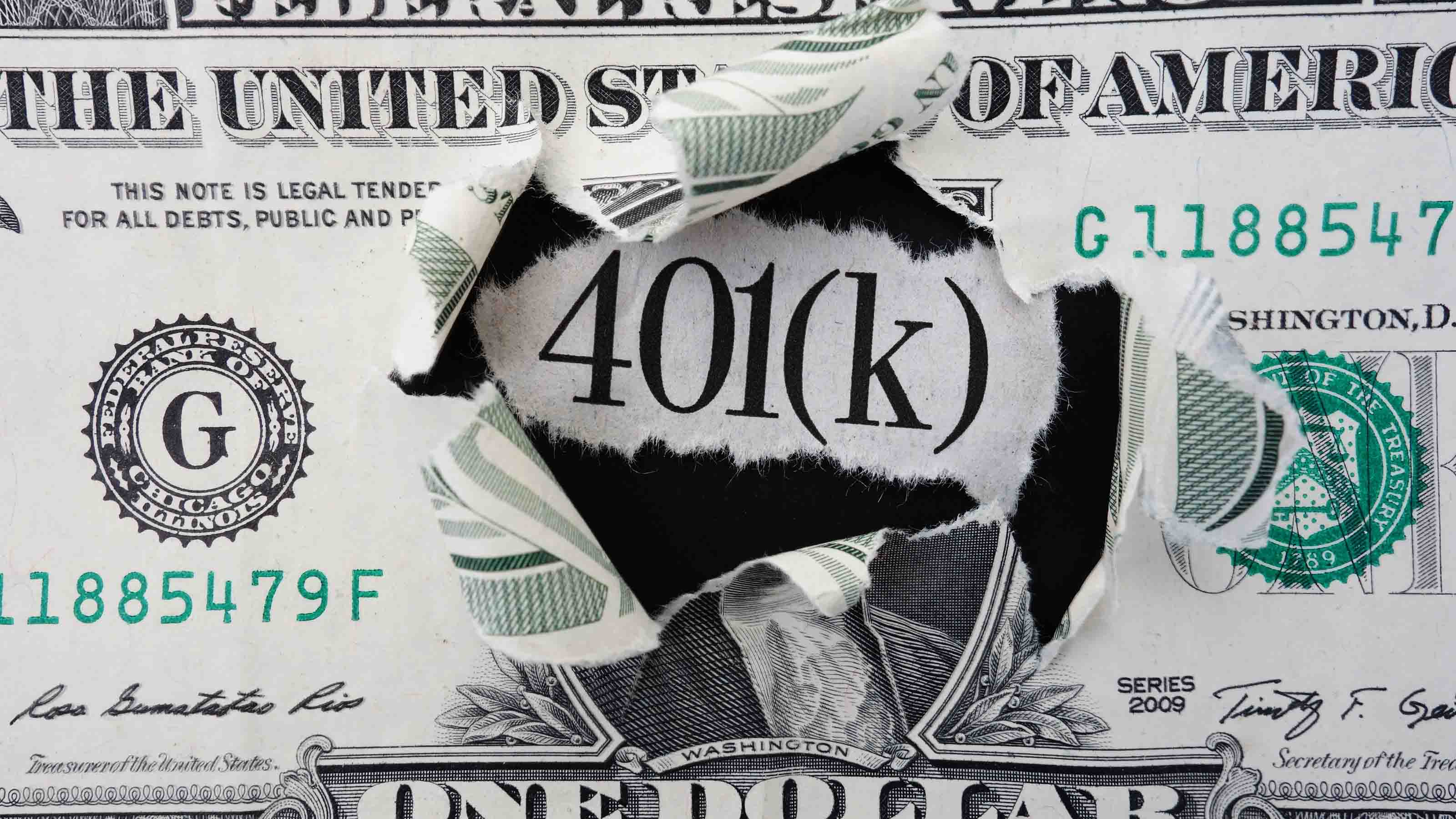401(k) Contribution Limits Rising Next Year
Workers saving for retirement have a reason to rejoice over the 401(k) contribution limits for 2022 and can expect even more next year.

Using a 401(k) account, if your employer offers one, is one of the best and most tax-friendly ways to build a nest egg. You should start saving in a 401(k) account as soon as possible, though the IRS limits how much you can contribute each year.
The good news is contribution limits for 2022 are up from last year and are projected to go even higher next year as a consequence of inflation.
401(k) Contribution Limits
Workers who are younger than age 50 can contribute a maximum of $20,500 to a 401(k) in 2022. That’s up $1,000 from the limit of $19,500 in 2021. If you're age 50 and older, you can add an extra $6,500 per year in "catch-up" contributions, bringing your total 401(k) contributions for 2022 to $27,000. Contributions to a 401(k) are generally due by the end of the calendar year.
From just $107.88 $24.99 for Kiplinger Personal Finance
Become a smarter, better informed investor. Subscribe from just $107.88 $24.99, plus get up to 4 Special Issues

Sign up for Kiplinger’s Free Newsletters
Profit and prosper with the best of expert advice on investing, taxes, retirement, personal finance and more - straight to your e-mail.
Profit and prosper with the best of expert advice - straight to your e-mail.
Looking ahead, the IRS should announce next year’s limits in November. In the meantime, asset management firm Mercer and employee benefits consulting firm Milliman both project the contribution limit to rise to $22,500 in 2023, with the catch-up contribution for people 50 and older forecast to reach $7,500. That’s a total of $30,000 for people 50 and older.
As Mercer noted, these increases will be records, eclipsing last year’s increases, which were the second highest at the time.
Mercer made its estimates at the end of July based on the tax code’s cost-of-living adjustment and rounding methods, the consumer price index for urban consumers through June, and estimated CPI-U values for July, August, and September. The latest Milliman projections were based on a Sept. 13 report from the U.S. Bureau of Labor Statistics.
Figures can’t be finalized until after September CPI-U values are published in October.The IRS usually announces official limits for the coming year in late October or early November. Milliman’s forecast was released in May.
A traditional 401(k) is an employer-based retirement savings account that you fund through payroll deductions before taxes have been taken out. Those contributions lower your taxable income and help cut your tax bill. For example, if your monthly income is $5,000 and you contribute $1,000 of that to your 401(k), only $4,000 of your paycheck will be subject to tax. While the money is in your account, it is sheltered from taxes as it grows.
The money can usually be invested in a variety of stock funds and bond funds, and companies are featuring more choices than ever. The average plan offers 21 funds to choose from. Equity funds and target-date funds are both common options in 401(k) plans. (See the best funds in 401(k)s for more on where to invest your retirement savings.)
A record number of employees—nearly 93%, according to the Plan Sponsor Council of America—had access to 401(k)s in 2020 after Congress passed legislation the previous year making it easier for part-time workers to participate in an employer’s retirement savings plan. Thanks to the Securing Every Community Up for Retirement Enhancement Act, part-time employees who work at least 500 hours for three consecutive years are eligible to enroll in their employer’s 401(k). The part-timer must also be at least 21 years old by the end of the three-year period.
Eligible employees may be signed up automatically in the company’s 401(k) unless they choose to opt out. Automatic enrollment is featured in 62% of plans, and the most common default is for employees to contribute 6% of pay, up from 3%, the standard default percentage since 2006.
Many employers also match their employees' contributions up to a certain percentage of salary. Some companies even contribute to workers' accounts regardless of whether the employees contribute their own money. On average, companies contributed 4.9% of an employee's pay to the employee's 401(k) account in 2020, according to data from the Plan Sponsor Council of America. That was down from 5.3% in 2019.
How Much Should You Save for Retirement in a 401(k)?
Experts recommend that workers save at least 15% of their income for retirement, including any employer match. For instance, if your employer contributes 3%, you would need to save an additional 12%.
If you aren’t saving that much right now, increase your contribution each year until you reach that goal. For example, if you are saving 3% now, increase that to 5% in 2022 then bump that up to 7% in 2023 and so on until you reach 15%. Many companies will even do it for you by automatically increasing the percentage you contribute each year. Of those companies, more than a third have auto-escalation caps of at least 10%.
When You Can Withdraw Money From a 401(k)?
You generally must be at least 59 1/2 to withdraw money from your 401(k) without owing a 10% penalty. The early-withdrawal penalty doesn't apply, though, if you are age 55 or older in the year you leave your employer.
Depending on the plan sponsor, you may be allowed to borrow up to 50% of your vested account balance or $50,000, whichever is less, but unless the money is used to buy a primary residence, you will generally need to repay the loan within five years, making payments at least quarterly. If you miss a payment, the remaining balance is treated as a distribution, with taxes and penalties for early withdrawals applying.
Possible Changes Ahead
Under legislation currently pending in Congress, catch-up limits would be higher for people aged 60 and older. Higher catch-up limits to apply at age 60. In addition to the increase allowed for people at age 50, the proposed change would allow an additional $10,000 in catch-up contributions for people between age 60 and 63, starting after 2024.
Traditional 401(k)s vs. Roth 401(k)s
A 401(k) works best for someone who anticipates being in a lower income tax bracket in retirement compared with the one they're in now. For example, someone currently in the 32% or 35% tax bracket may be able to retire in the 24% bracket.
Employers have been increasing tax diversification in their retirement plans by adding Roth 401(k)s. These accounts combine features of Roth IRAs and 401(k)s. Contributions go into a Roth 401(k) after you have paid taxes on the money. You can withdraw contributions and earnings tax- and penalty-free if you're at least age 59 1/2 and have owned the account for five years or more. You'll also be required to take minimum distributions from a Roth 401(k) once you turn age 72. However, you might be able to avoid RMDs if you can move the money from a Roth 401(k) into a Roth IRA, which has no required minimum distributions.
(Note: If you invest in both a 401(k) and a Roth 401(k), the total amount of money you can contribute to both accounts can't exceed the annual limit for your age, either $20,500 or $27,000 for 2022. If you do exceed it, the IRS might hit you with a 6% excessive-contribution penalty.)
401(k) Retirement Savings Tips
Advice for maximizing your 401(k) savings:
- Max out your contributions. For each year that you're able, aim to hit the limit.
- Once you turn 50, add your permitted catch-up contribution to that limit annually while you continue to work.
- If your employer offers to match your contributions up to a certain amount, be sure to invest at least that much in your 401(k) each month. It's free money, after all.
Profit and prosper with the best of Kiplinger's advice on investing, taxes, retirement, personal finance and much more. Delivered daily. Enter your email in the box and click Sign Me Up.
Jackie Stewart is the senior retirement editor for Kiplinger.com and the senior editor for Kiplinger's Retirement Report.
-
 I'm want to give my 3 grandkids $5K each for Christmas.
I'm want to give my 3 grandkids $5K each for Christmas.You're comfortably retired and want to give your grandkids a big Christmas check, but their parents are worried they might spend it all. We ask the pros for help.
-
 If You're Not Doing Roth Conversions, You Need to Read This
If You're Not Doing Roth Conversions, You Need to Read ThisRoth conversions and other Roth strategies can be complex, but don't dismiss these tax planning tools outright. They could really work for you and your heirs.
-
 Could Traditional Retirement Expectations Be Killing Us?
Could Traditional Retirement Expectations Be Killing Us?A retirement psychologist makes the case: A fulfilling retirement begins with a blueprint for living, rather than simply the accumulation of a large nest egg.
-
 New 2026 Tax Change Could Mean More for Your IRA and 401(k) Savings
New 2026 Tax Change Could Mean More for Your IRA and 401(k) SavingsRetirement Savings Here's how the new IRS inflation adjustments will increase the contribution limits for your 401(k) and IRA in the new year.
-
 10 Retirement Tax Plan Moves to Make Before December 31
10 Retirement Tax Plan Moves to Make Before December 31Retirement Taxes Proactively reviewing your health coverage, RMDs and IRAs can lower retirement taxes in 2025 and 2026. Here’s how.
-
 Claiming the Standard Deduction? Here Are Five Tax Breaks for Retirement in 2025
Claiming the Standard Deduction? Here Are Five Tax Breaks for Retirement in 2025Tax Tips If you’re retired and filing taxes, these five tax credits and deductions could provide thousands in relief (if you qualify).
-
 IRS Names Its First CEO: But He’s Also Still Running Social Security
IRS Names Its First CEO: But He’s Also Still Running Social SecurityTax News Will this new role make it difficult to address emerging issues like budget and staffing cuts and customer service concerns?
-
 IRS Phasing Out Paper Checks: What Happens After September 30?
IRS Phasing Out Paper Checks: What Happens After September 30?Tax Changes Avoid delays when IRS tax refunds and Social Security paper checks are cut off. Here’s what to know.
-
 Ask the Editor, September 12: Tax Questions on 529 Plan Rollovers to a Roth IRA
Ask the Editor, September 12: Tax Questions on 529 Plan Rollovers to a Roth IRAAsk the Editor In this week's Ask the Editor Q&A, we answer four questions from readers on transferring 529 plan money to a Roth IRA.
-
 Ask the Editor, August 29: Tax Questions on Estate and Gift Taxes
Ask the Editor, August 29: Tax Questions on Estate and Gift TaxesAsk the Editor In this week's Ask the Editor Q&A, we answer questions from readers on estate and gift taxes.
-
 Will You Get a ‘Surprise’ Tax Bill on Your Social Security Benefits in Retirement?
Will You Get a ‘Surprise’ Tax Bill on Your Social Security Benefits in Retirement?Retirement Taxes Social Security benefit payments might land you in hot water when filing 2025 taxes — here are three reasons why.